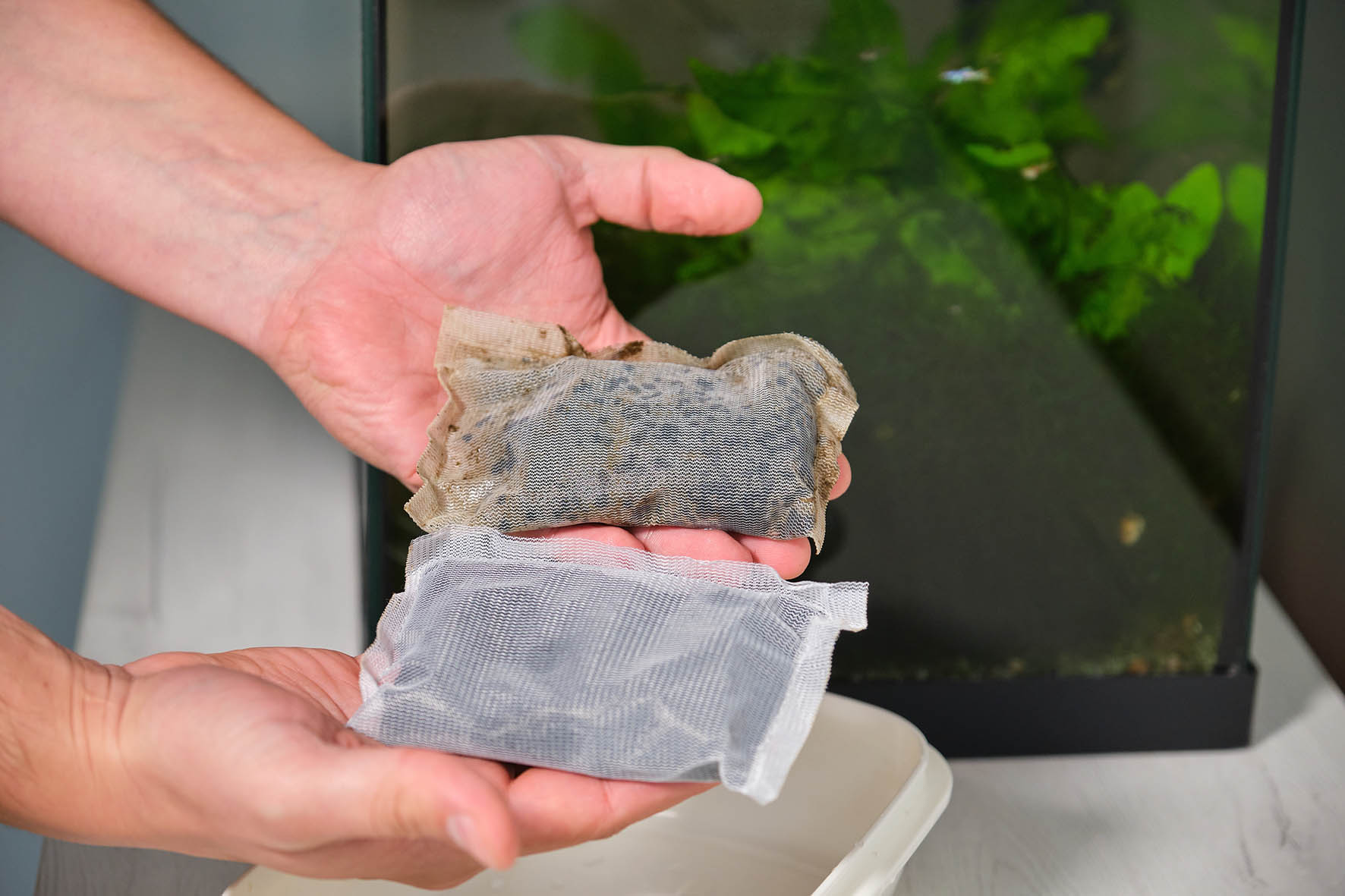When it comes to aquaria, filtration is usually the most essential life support system there is. So how is it cleaned and how often?
Tank maintenance can be highly variable—after all, no two tanks are the same. However, there are some habits that can be loosely applied across the board for freshwater fishkeepers.

Cleaning aquarium mechanical filters/pads
Probably the most common type of filter media is the foam or sponge pad. Because these are designed to trap out solid, particulate waste from the water, it stands to reason that they will become clogged the soonest.
The most obvious sign that they need a clean is when the outflow of your filter starts to slow down. How often this occurs will depends on many factors: how large (or small) the filter is; how many fish you have in the tank; how messy your fish are (species like goldfish and large cichlids can be notorious filter cloggers); and how heavily you feed.
How often should I clean my aquarium filter?
As a rule of thumb, it’s wise to clean and sponge filters every two weeks. But if your flow is dropping off considerably after only a week it will be worth establishing whether your filter is large enough to cope with the job. If you have more than one sponge in your filter, alternate cleaning them, rinsing them two weeks apart from each other.
How do I clean my aquarium filter?
Cleaning a filter sponge involves manually removing it from the filter housing and squeezing it in some water to loosen and discard the solid waste inside it. Traditional wisdom has always been that this should take place in a bucket of aquarium water (meaning that it times in well with a partial waterchange), rather than rinsing under a tap, so that the chlorine in tapwater doesn't harm any beneficial filter bacteria living on the sponge. In fact, it may be the case that more harm is carried out by over-cleaning newly established filters in running water (chlorinated or otherwise).
Some experienced aquarists have found that rinsing well-established (running for four months or longer) sponges briefly under a tap has no notable effect on bacterial populations. This is all still quite contentious, and as a casual hobbyist (and especially as a fishkeeper with a new aquarium) it is strongly advised that you rinse filters gently in old aquarium water, just to be on the safe side.
As an added bonus, the resulting fish waste/water mix is especially nutritious for any houseplants you may have.
Once the filter sponge starts to lose its elasticity (if you squeeze it in your hand and it doesn’t shift back to its original shape) then it’s time to replace it. In a filter that’s been properly matched to the size of the tank/bioload of fishes, this is usually somewhere between 12-18 months, though can vary by brand.
Extremely fine filter wool, used for polishing a tank is usually too difficult to clean, and should be replaced as and when it becomes dirty or starts to impair filter flow.

Cleaning aquarium chemical filters
The likes of carbon and zeolite, used in filters to polish the water or remove chemicals like ammonia, have a finite lifespan in aquaria. As a guideline, in a tank that isn’t overstocked, carbon filtration will last around six weeks before it is exhausted, while zeolite may last up to two months. But if the chemicals that they are removing are elevated, they will need to be replaced sooner. A test of the water may help to reveal if they are still functioning or not.
Note also that their efficiency can be impaired if they become smothered in solid waste. If your carbon is covered in sludge or biofilm, it is difficult for water to reach it and chemical filtration to take place. With that in mind, it’s always worth looking any chemical filter media over each time you clean your mechanical (sponge) filters.
Chemical filters are usually designed to be replaced rather than cleaned, so once their known lifespan is up, swap them out for new (the packaging they come in will usually offer a guideline for specific brands).

Cleaning aquarium biological filters
Biological media, often in the form of highly porous balls, hoops, chunks, or noodles, is where the bacteria that convert your fish wastes live. But like chemical filters, if they become excessively smothered, they can reduce their efficiency. It can be tricky to monitor: they need to be slightly dirty in order to function, but not dripping with sludge.
Aim to clean around half of your biological media in aquarium water every four weeks. If you’re lucky enough to have separate filter chambers for biomedia (such as in many external canister filters) then alternate them, cleaning one chamber one month, and the other the next.
Importantly, it’s wise to clean biomedia in a bowl or bucket of aquarium water, and certainly not under vigorous running water.
Replacing any biological media isn’t as simple as swapping out a dirty sponge pad, as by definition is contains the bacteria that are keeping your water safe and healthy for your fish.
In the event that your biomedia begins to clog or crumble apart, only replace one third of it at a time, leaving at least four weeks before replacing the next third, and another four weeks before replacing the last third. This will give the remain bacteria populations time to shore up their numbers and colonise the new media.
Lastly, while you have your filter open ready for maintenance, this is also the perfect time to consider cleaning your impeller!







